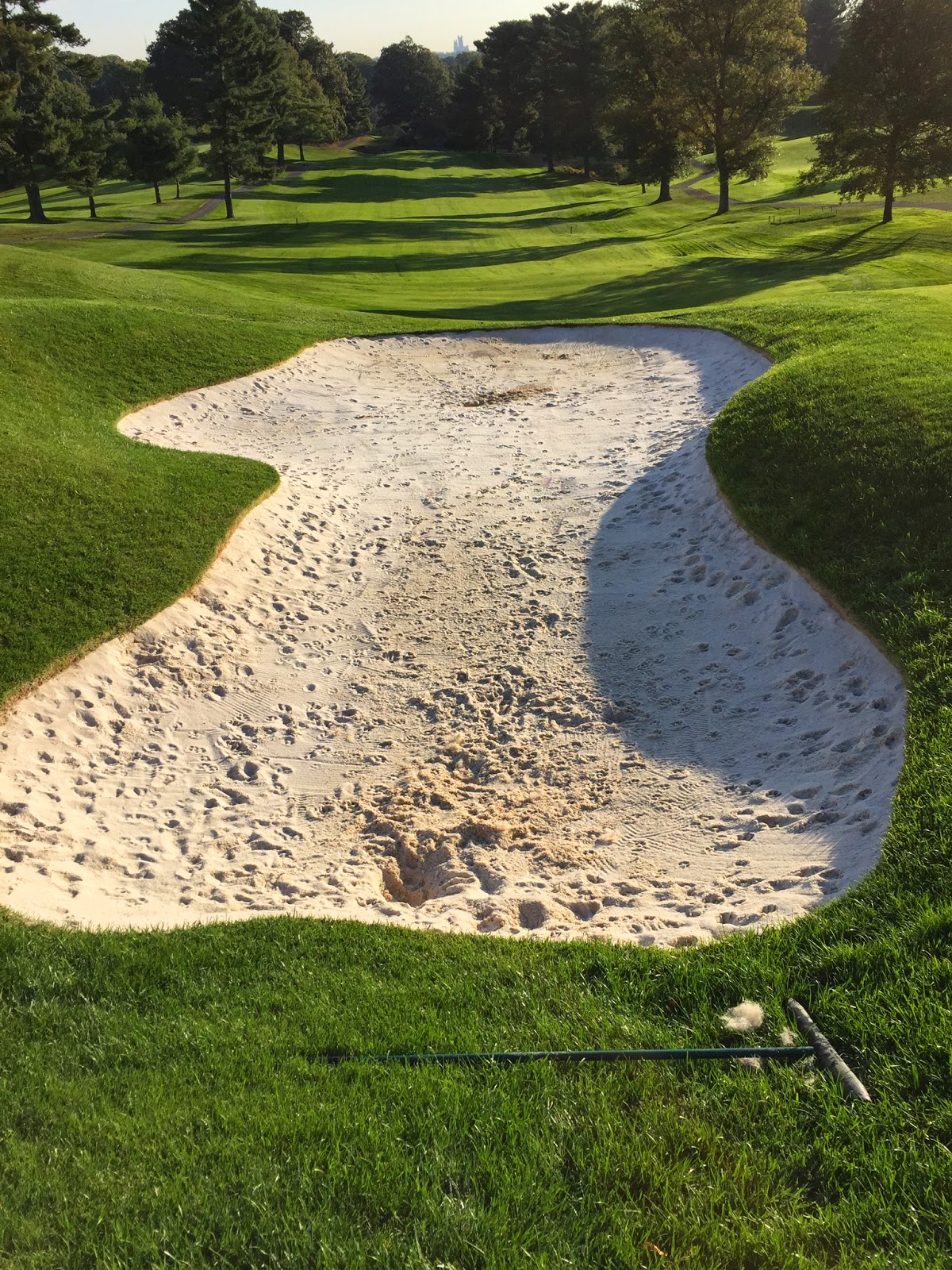I'll start off by saying that there has been some spectacular weather recently and the mornings on the course have been beautiful. At this point we have aerified the fairways, tees and greens. Deposited over 40 tons of sand onto these surfaces, fertilized all the course and begun restoration of the range area.
 The foxes have been very active in the bunkers recently. They dig all the way to the soil and gravel layer below bringing up all kinds of material which can make for quite a mess. This leaves the bunker with a lot of gravel and very uneven. Many times we do not have the time to adequately repair all the damage. We start to fix only to find them torn apart the next day to an even worse condition.
The foxes have been very active in the bunkers recently. They dig all the way to the soil and gravel layer below bringing up all kinds of material which can make for quite a mess. This leaves the bunker with a lot of gravel and very uneven. Many times we do not have the time to adequately repair all the damage. We start to fix only to find them torn apart the next day to an even worse condition. Many times when we find a low bunker, it has become contaminated with gravel from the drainage, fox digging and soil from rainstorm washouts. We remove all the sand and start fresh. In the case of the bunker shown below, this happens to be the left green side bunker from 15, we find that a buildup of sand from play has radically altered the original contour and shape of the bunker.
The area at the rake shows a nearly 18" build up of sand towards the green, which must be removed, the area contoured back to the original soil line and sod replaced. In this case, we will have to strip this all the way to the green to find the original soil lines and strip between the bunkers due to this buildup.
This is what we normally see after a year or two at the practice green bunker, but you can see what the effects are of play over the years from bunkers. Many wonder why the sand in bunkers gets so low, well here is the visual proof of where it goes. Normal bunker sand is usually 4-6 inches deep so that buildup is over three times the depth of the original bunker contents!
Speaking of our work on the range, we aerified the range, seeded, limed and fertilized the soil. In addition we used cores from the aeration process to fill in may of the poorer soil areas. The picture below shows a small sample of the rocks removed from the surface in the middle of the range. The constant wear from the range picker, coupled with a range that was built from poor fill may help you to understand how hard it is to provide a quality surface when the ingredients are so poor. We will continue to work as much as possible to improve this issue, but poor soil and drainage combined in a small space with heavy use work against us.
Below is a picture of the walk on to the 8th green. We have experienced several times over the past few years the walk on to the green getting water saturated. Why this happens continues to puzzle us. There are no leaks, it goes a year without any issues then suddenly it becomes a quagmire. Interesting that immediately below the surface everything is dry. We strip the sod yet the soil an inch down is dry. Irrigation has been turned off to rule out leaks and sprinklers checked to make sure none are stuck in a position that drowns the area. It is fairly compacted from all the cart traffic (yes people park there) and shade and walk on traffic, so the grass is not deeply rooted. But, it is a phenomenon that puzzles us and seems to have no rhyme or reason for its occurrence. We will strip the area, try to let it dry for a day then sod again and see what happens. We may have to resort to drains but the issue remains a mystery to us.





